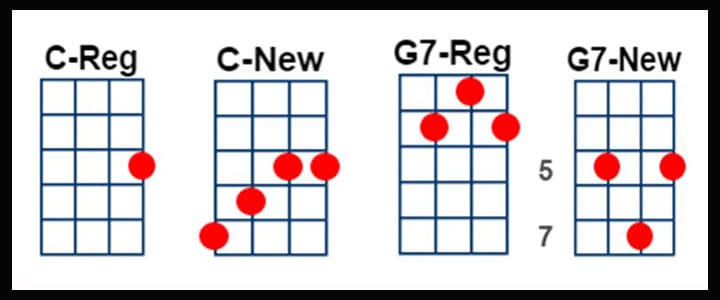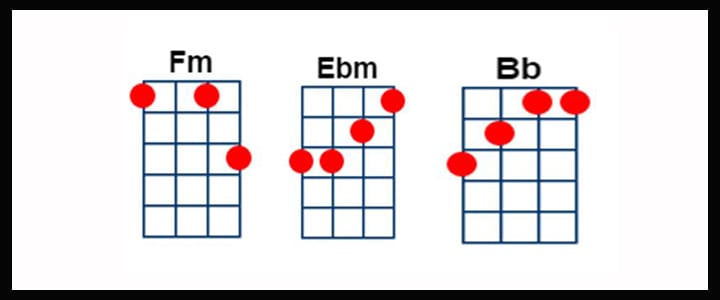Want to learn to play ukulele in different styles and genres? Here, ukulele teacher Michael L. explains how you can get the most out of your ukulele and learn to play new songs and chords…
Stuck in a rut when it comes to playing your ukulele? Want to start branching out and playing in different genres and styles, but don’t know where to start? Well, have no fear!
This post will give you four simple steps to help get you started. So put on your thinking cap and let’s get started!
Can I Teach Myself Ukulele?
Yes – you can teach yourself how to play the ukulele! Here are a few tips to get you started as you learn how to play a ukulele:
- Start by learning the basic chords. A great way to do this is to find a ukulele chord chart online, or in a book. Once you know the chords, you can start practicing basic melodies.
- Practice strumming patterns. There are many different strumming patterns that you can use, so find one that you like and practice it until you have it down.
- Don’t be afraid to experiment. Try different techniques and experiment with the sounds that you can create on your ukulele.
With a little practice, you’ll be playing the ukulele like a pro in no time! To fast track your way to success in playing ukulele in different genres and styles, you may want to consider signing up for ukulele lessons. You’ll learn everything you need to know, including what you see in the video below:
https://www.youtube.com/watch?v=LnlJw0_YYAI
How Do You Play the Ukulele for Beginners? Simple Tips to Change Up Your Style
What’s the first thing that comes to mind when you think of the ukulele? Is it of someone playing “Somewhere Over the Rainbow“? Or a singer/songwriter playing a soft ballad? Something like the volcano love song in the Pixar short film? I’m here to tell you that the ukulele can do so much more than that. Don’t get me wrong, I love sentimental ballads, but the ukulele can also lead ragtime, jazz, blues, or strange, ethereal tunes, too.
Read on to learn how to play ukulele in different genres and styles!
1. Change Your Ukulele Strings
By now you probably know how to tune a ukulele in standard tuning, but If you want to be able to play different types of songs and music, you need to make a few minor tweaks to your ukulele. First, I recommend replacing the high G string with a low G string. This gives your ukulele a broader range and a little more versatility.
*Note: you can’t do this with every type of ukulele. You need a concert or tenor ukulele in order to change to a low G string. If you have a baritone ukulele, it already comes with a low D string.
2. Learn New Chord Voicings
The next step to play ukulele in different genres is to learn new chord voicings. For instance, instead of playing a C on the third fret (C-reg below), play it starting on the fifth fret (C-new below), and instead of playing a G7 on the second fret (G7-reg below), play it starting on the fifth fret (G7-new below).
Experiment by finding familiar notes and chords in new places on the neck, and then adding new notes that weren’t possible with the standard chordal voicing.
3. Learn New Ukulele Chords
OK, now that you’ve got your low G string and you can play familiar chords in new places, it’s time to learn some new chords! For jazz, the C7 shape and the Bm6 shape are invaluable. Try alternating the two shapes as you walk down the neck.
For instance, start with a C7 and then go down to a Cm6, then to a Bb7 and then a Bbm6 (check out the video below to see how this sounds).
The Adim shape and Dmaj7 shape also work well with jazz on the ukulele.
Believe it or not, the ukulele can play the blues pretty well, too.
Check out this turnaround in C:
To play this in other keys, play the root on the A string, start on the same fret on the G string, and walk down chromatically on the G string while keeping the root note on the A string.
End the turnaround with a 5 7th chord. You can play the minor pentatonic, or blues scale, too.
If the root is on the G string, the pattern is:
A —————1-3–
E ———-1-3——-
C —–0-2————
G 0-3—————–
*Note: the fret numbers will change depending on your root note, but the pattern is the same
If the root is on the C string, the pattern is very similar:
A —————1-3–
E ———-1-3——-
C —–0-3————
G 0-3—————–
Again, the fret numbers will change depending on your root note, but the pattern is the same.
If you’re getting tired of playing songs in a major key, try the minor keys and you will get some surprisingly surreal sounding songs. The key of Fm has a particularly haunting sound on the ukulele. I also like bouncing between minor chords; starting on the C string (Ebm below), to major chords starting on the G string (Bb below) while putting in some lead melodies on the A string, where appropriate. You will notice a definite change in sound with a low G string here.
Want to know how to play ukulele chords? Although it may seem daunting at first, playing ukulele chords is relatively easy once you get the hang of it. The key is to use the right fingering, which will vary depending on the chord you’re trying to play.
For example, the A chord can be achieved by holding down the second fret on the first string with your index finger and the second fret on the second string with your middle finger. Once you’ve got the hang of basic chords, you can start to experiment with more complex ones.
For example, the C7 chord is made by holding down the first fret on the first string with your index finger and then using your middle and ring fingers to hold down the third and fourth frets on the second and third strings. With a little practice, you’ll be playing ukulele chords like a pro in no time!
4. Try New Songs to Play on Ukulele
Try listening to a variety of music to see what style or genres you’re most drawn to. There are plenty of easy songs to play on ukulele out there for you to explore. You might want to check out some online tutorials or videos that can teach you the basics of different styles of ukulele playing.
Once you have a better idea of what you’d like to learn, look for resources that can help you specifically with that style.
For example, if you’re interested in learning to play Hawaiian-style ukulele, look for instructional materials that focus on that style of playing. With a little bit of effort, you can quickly start expanding your ukulele playing repertoire.
Is it Easy to Learn to Play the Ukulele?
Ukulele is a versatile instrument that can be played in different styles and genres. These three simple steps will help you get started playing the ukulele in any style you want.
I hope these tips gave you some new ways to play ukulele. It’s a powerful instrument and deserves some recognition beyond the singer/songwriter status. Happy practicing and have fun!
Need some help changing your strings or playing new chords? Search here for a ukulele teacher near you!
Once you’ve learned these basic techniques, experiment with your own variations and find what works best for you. Have fun and enjoy making music on this unique little instrument!
 Post Author: Michael M.
Post Author: Michael M.Michael teaches ukulele, guitar, drums, and music theory in Austin, TX. He studied music theory and vocal performance at the Florence University of the Arts in Italy. In addition to private lessons, Michael teaches music to special education students in Austin public schools and foster children with Kids in a New Groove. Learn more about Michael here!
Photo by Phil Thomas
Maile Proctor



